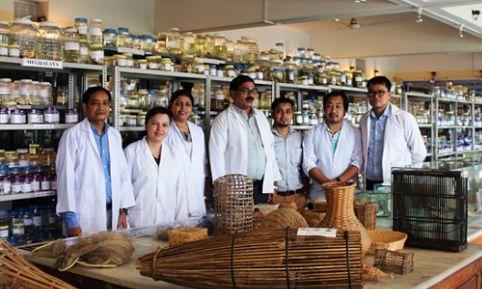A group of researchers from the College of Fisheries, Tripura explore biodiversity of fish in Manipur, Meghalaya, Mizoram and Nagaland. This helps in identification and cataloging fishes for conservation of endangered species. It also helps restricting sale and consumption of harmful fishes.
New Delhi (ISW): Unsustainable use of fishery resources and declining fish diversity are matters of grave concern. The identification and cataloguing fishes is necessary for conservation of endangered species. Such efforts may also help in restricting the sale and consumption of harmful fishes in markets and restaurants.
A group of researchers from the College of Fisheries, Tripura have explored biodiversity of fish in Manipur, Meghalaya, Mizoram and Nagaland.
In fishes, species identification is particularly challenging due to high resemblance of dissimilar individuals and the changing colour of same species as the age progresses. To remove this bottleneck, scientists use DNA barcoding in which species are differentiated on the basis of differences in a segment of DNA region.
For this study, scientists collected 363 fishes from Brahmputra, Barak and Chindwin rivers and their tributaries in the four NE states. They first tried to classify fishes on the basis of their resemblance in documented in the literature and also preserved the specimens at a museum in their department. Further, they isolated their DNA and amplified a portion of gene ‘cytochrome oxidase I’ from all the samples. The amplified region was then sequenced followed by a phylogenetic analysis where the differences in the nucleotide sequence of this gene formed the basis for identifying species.
“The Indo-Myanmar biodiversity hotspot represents high endemism which is under continuous threat. The level of threat to entire river ecosystem of the region could drastically increase in near future due to several anthropogenic activities. Therefore, sustainable management of the aquatic resources of the region is desperately needed to conserve fish diversity”, said Dr. Anindya Sundar Barman, author of the study.
The result of the study, which was funded by the Department of Biotechnology (DBT), was published in the journal Scientific Reports.


